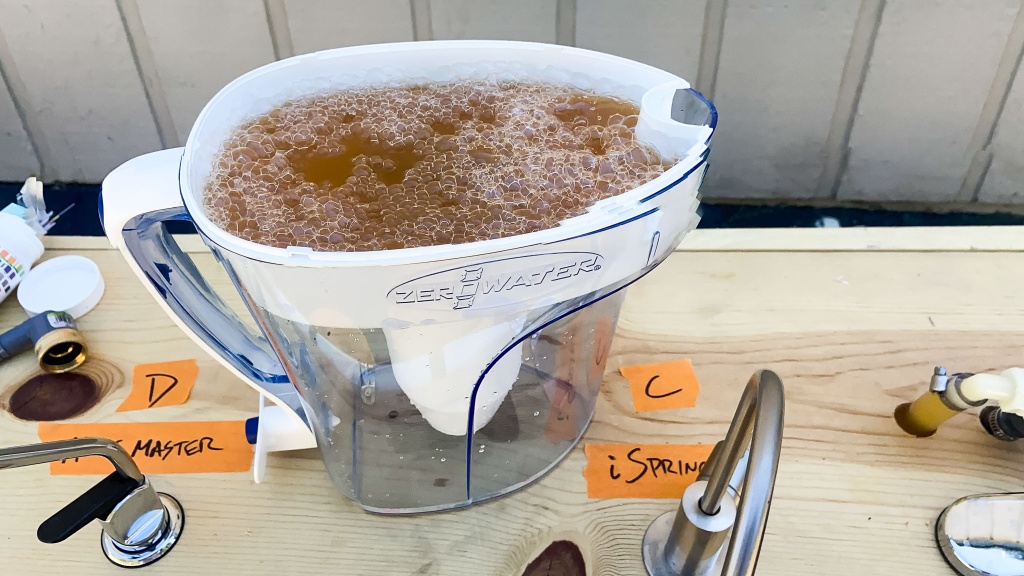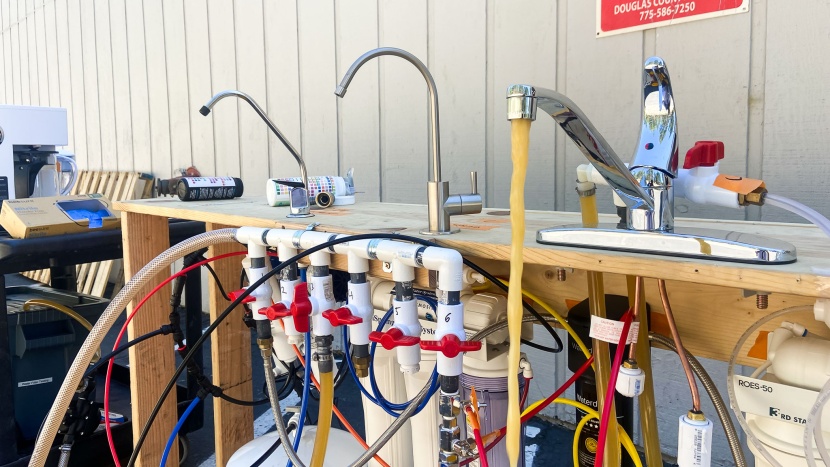Embarking on a journey to find cleaner, tastier water? We've done the legwork for you. We purchased today's leading water filters and evaluated their performance in side-by-side comparison testing. We put each filter through the ringer, handing out awards to the best performers. We created toxic, heavily polluted water samples, filtered them, and sent them to a water quality lab for thorough analysis. This allowed us to truly pit these products against each other. Continue reading to discover our precise testing and scoring methods. Alternatively, head on over to our water filter review to see how each filter scored and which ones came out on top!
Contaminant Removal
Our testing process begins with the crucial aspect of contaminant removal. To evaluate this, we create a dirty water sample by dissolving specific amounts of contaminants, including chlorine, sulfate, copper, iron, lead, and fluoride. We send a control sample to the lab to establish an accurate baseline.
Each water filter then processes this contaminated sample. Before and after filtration, we send samples to an independent third-party water quality lab; Western Environmental Testing Laboratory. The lab conducts a thorough analysis to determine the presence and quantity of each contaminant in the control and filtered water. This provides concrete data on how effectively each filter has removed contaminants. Given its importance, this metric accounts for a significant 60% of the total score.
Taste
The next aspect we test is the taste of the filtered water. This evaluation involves filtering water from a garden hose and conducting a blind taste test with our test team. Each tester rates the water on a scale of 1-5, with one being poor and five being excellent. We understand that taste is a subjective metric, so our testers strive to describe the taste as accurately as possible during the process.
We then average these 1-5 scores and double them to produce a 1-10 scale score. Given its subjective nature yet vital importance to users, this metric accounts for 30% of the total score.
Setup and Installation
The final aspect we evaluate is setup and installation. This area is crucial as it directly impacts user experience. We assess factors such as installation difficulty and required time. We also consider the cost and complexity of maintenance, annual costs, and wastewater ratios for reverse osmosis systems.
A water filter might excel in removing contaminants and improving taste, but if it's challenging to install or maintain, it could deter potential users. Therefore, we allocate 10% of the total score to this category to ensure a well-rounded evaluation.
Conclusion
Our comprehensive testing process is designed to provide a holistic view of each product's performance. By focusing on contaminant removal, taste, and setup/installation, we ensure that our reviews are thorough, accurate, and, most importantly, useful for consumers making informed decisions. For more information on how each product did when subjected to the above tests, head on over to our comprehensive water filter review. Alternatively, you can check out our Buying Advice guide for more background information on these products and a breakdown of different types of filters.



